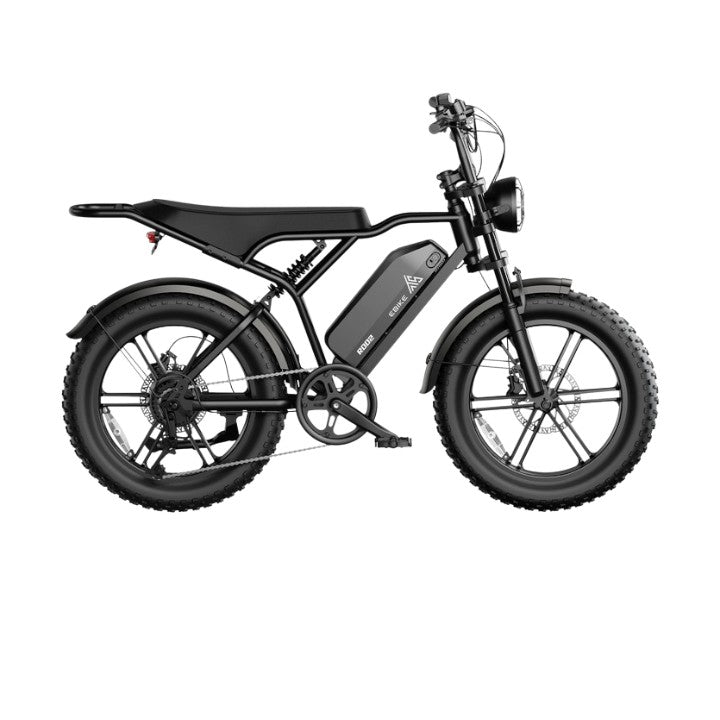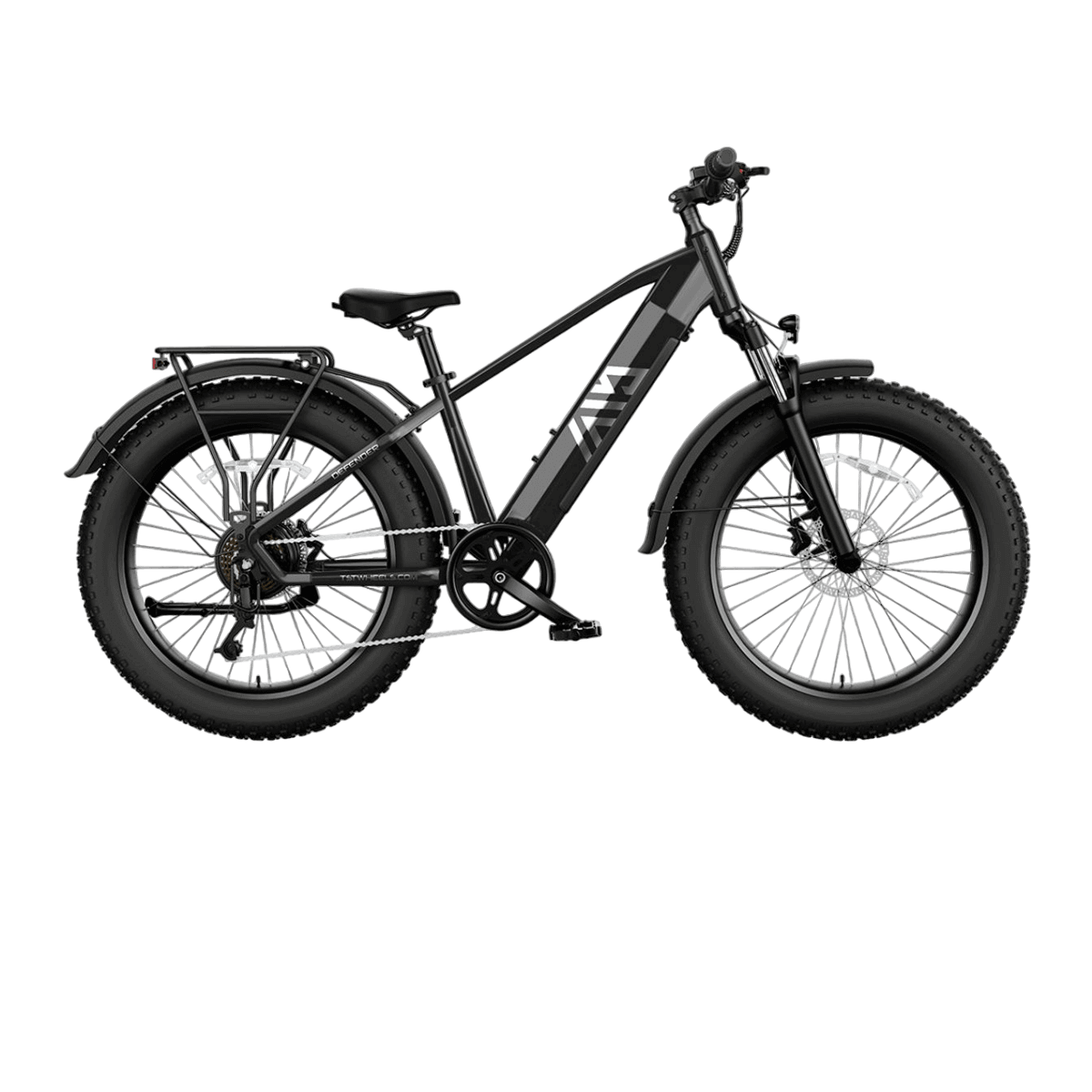Electric bikes are an excellent option for those with bad knees because their pedal-assist systems reduce joint strain, allowing comfortable, low-impact exercise. Models like the TST Defender 26 and Dreamer 27 provide adjustable assistance, ergonomic design, and smooth power delivery that help alleviate knee pain while promoting mobility and cardiovascular health, making cycling accessible and enjoyable for people with knee issues.
How Do Electric Bikes Alleviate Knee Pain During Cycling?
Electric bikes alleviate knee pain by providing motorized pedal assistance that reduces the force needed to pedal, especially on hills or rough terrain. This lowers the load on knee joints and surrounding muscles, preventing flare-ups and discomfort. The smooth, consistent pedaling motion strengthens muscles around the knee, improving joint stability and reducing pain over time without high-impact stress.
What Features Should You Look for in an E-Bike for Bad Knees?
When choosing an e-bike for bad knees, prioritize:
- Adjustable pedal assist levels to customize support based on your comfort and terrain.
- Step-through or low-step frames for easy mounting and dismounting without excessive knee bending.
- Ergonomic design including cushioned seats, adjustable handlebars, and suspension to minimize joint stress.
- Powerful motors (500W or more) to assist with hills and reduce pedaling effort.
- Fat tires (like on the TST Defender 26) for cushioning on rough surfaces or standard 27-inch tires (like the Dreamer 27) for smooth urban rides.
Why Is Proper Bike Fit Crucial for Riders with Knee Pain?
Proper bike fit ensures optimal riding posture that minimizes knee strain. Adjusting saddle height so that your knee has a slight bend at the bottom of the pedal stroke prevents overextension or excessive bending, both of which can exacerbate pain. Handlebars and frame size should support an upright, comfortable position to reduce pressure on knees and back, enhancing endurance and reducing injury risk.
Chart title: Key Bike Fit Adjustments for Knee Pain Relief
| Adjustment | Purpose |
|---|---|
| Saddle Height | Prevents overextension/bending |
| Frame Size | Ensures comfortable reach |
| Handlebar Position | Promotes upright posture |
| Pedal Type | Reduces joint stress |
How Does Maintaining a Consistent Pedaling Cadence Help Knee Health?
Maintaining a steady, moderate pedaling cadence (around 60-75 rpm) reduces peak loads on the knee joint by distributing force evenly throughout the pedal stroke. Avoiding sudden bursts of speed or pushing heavy gears prevents excessive joint compression and pain. Electric bikes facilitate this by allowing riders to adjust assistance levels, making it easier to sustain a comfortable cadence.
Which TST EBike Models Are Best for Riders with Bad Knees?
The TST Defender 26 with fat tires offers excellent shock absorption on rough terrains like sand and snow, reducing joint impact. The TST Dreamer 27, with its 27-inch wheels, is ideal for daily commuting and mountain biking on smoother trails. Both models feature adjustable pedal assist, ergonomic frames, and powerful motors that help minimize knee strain while maximizing comfort and performance.
Chart title: TST EBike Models for Knee-Friendly Cycling
| Feature | Defender 26-inch Model | Dreamer 27-inch Model |
|---|---|---|
| Terrain Suitability | Rough terrains (sand, snow) | Urban commuting, mountain biking |
| Tire Size | 26 inches (fat tires) | 27 inches |
| Motor Power | 1300W | High-power |
| Pedal Assist | Adjustable | Adjustable |
| Frame Design | Step-through option available | Step-through option available |
What Are Practical Tips for Cycling Comfort with Bad Knees?
- Warm up and stretch knees before riding to improve flexibility and reduce stiffness.
- Use the e-bike’s pedal assist to reduce effort on inclines and long rides.
- Remove unnecessary weight from the bike to ease pedaling.
- Avoid rough terrain or adjust assistance to maintain smooth, pain-free cycling.
- Cool down and stretch after rides to prevent soreness.
Buying Tips
When buying an e-bike for bad knees, keep these in mind:
- Opt for models with adjustable pedal assist and step-through frames for ease of use.
- Choose appropriate tire size: fat tires for rough terrain (Defender 26) or standard tires for urban use (Dreamer 27).
- Prioritize comfort features like suspension, cushioned seats, and ergonomic handlebars.
- Check battery range and motor power to suit your typical rides.
- Purchase from reputable brands like TST EBike that offer quality control and customer support.
These tips help ensure your e-bike supports your knee health and riding enjoyment.
If you have chronic knee pain or knee osteoarthritis, rest assured that there are others facing the same challenges. Numerous Americans endure discomfort and restricted movement caused by knee arthritis. Fortunately, there are effective low-impact exercises like cycling that can ease knee pain and enhance the muscles nearby. In this article, we will examine why cycling, particularly with an electric bike (e-bike), is an excellent exercise choice for people with problematic knees. Additionally, we will delve into important considerations when selecting an e-bike for managing knee arthritis.
The Benefits of Cycling for Arthritis Patients
Cycling is a low-impact exercise that reduces joint stress, making it ideal for arthritis patients. It enhances joint mobility, strengthens muscles, and improves cardiovascular health. Regular cycling can alleviate pain and stiffness associated with arthritis, promoting overall well-being.
Low-Impact Exercise
In contrast to activities like running or jogging, cycling is a low-impact exercise, which does not put excessive pressure on your knees. The knees absorb shock every time you run, which increases the stress on your joints. Pedal a bike, on the other hand, and you will experience a smooth motion that won't jar your joints.
Cycling also gives your legs a full range of motion, which helps strengthen muscles around the kneecap, such as those around your quadriceps and calves. These muscles can reduce joint strain by supporting and carrying your lower body weight.
Strengthening Muscles
Cycling requires your legs to go through a full range of motion, which helps strengthen muscles around the kneecap such as the quadriceps and calves. Stronger leg muscles provide better support to your joints and alleviate some burden from them.
Weight Management
Being overweight can worsen arthritis symptoms as it places additional pressure on the joints—particularly the knees. Cycling is an excellent way to burn calories and manage weight effectively while minimizing stress on your knee joints.
Cardiovascular Health
Regular cardiovascular exercise promotes good heart health by strengthening the heart muscle and improving blood circulation throughout the body—including vital organs like lungs—and reducing cardiovascular disease risk factors.
Outdoor Experience & Mental Well-being
You can get exercise outdoors with cycling, unlike indoor workout options like recumbent stationary bikes and treadmills. Time spent in nature has been shown to reduce stress, boost mood, and improve attention. Taking a long bike ride outdoors can be incredibly rewarding and can make you feel better as a whole.
EBikes: A Game-Changer for Arthritis Patients
Electric bikes offer adjustable pedal assistance, reducing strain on arthritic joints. They enable longer rides with less effort, improving mobility and independence. E-bikes make cycling accessible and enjoyable for arthritis patients, encouraging consistent physical activity.
Electric bicycles (e-bikes) provide added assistance through their pedal assist system (PAS) powered by an electric motor. This feature is particularly beneficial for individuals with knee arthritis as it reduces the effort required to pedal, alleviating pressure on the knees. Here's why e-bikes are a game-changer:
Adjustable Assistance
With a pedal assist system, you can control the level of assistance provided by the electric motor based on your needs and comfort level. This flexibility allows you to reduce strain on your knees during flare-ups or challenging situations.
Walk Assist Feature
E-bikes often come equipped with a walk mode that gently powers the bicycle forward while you walk alongside it. This feature eliminates the stress of manually pushing the bike and provides additional support when needed.
Comfortable and Motivating
The added assistance from an electric motor makes cycling more comfortable overall, increasing motivation to engage in regular exercise without fear of exacerbating knee pain or fatigue.
Choosing the Right E-Bike for Bad Knees
For individuals with bad knees, selecting an e-bike with a step-through frame, ergonomic design, and adjustable features is crucial. These elements facilitate easy mounting, promote proper posture, and minimize knee strain, ensuring a comfortable riding experience.
When selecting an electric bike specifically designed for individuals with bad knees or knee arthritis management, several factors should be considered:
- Frame Size: Look for bikes that offer multiple frame sizes suitable for various heights. An appropriately sized bike ensures comfortable mounting/dismounting as well as optimal riding posture that minimizes back pain.
- Pedal Assist Levels: Make sure the e-bike offers adjustable levels of pedal assistance so that you can tailor it according to your needs during each ride.
- Speed Adjustment: Having speed adjustment options provides greater control over pacing yourself according to your comfort level or skill set as a beginner rider.
- Motor Power: Opt for electric bikes with sufficient motor power (preferably 500 watts or more) which helps tackle challenging terrain or uphill sections without exerting excessive pressure on your knees.
- Battery Range: Consider e-bikes with longer battery life to avoid frequent recharging. Look for UL 2271-certified batteries, which ensure higher safety standards and quality.
- Tire Options: Fat tires provide better cushioning on rough terrains, making them ideal choices for individuals seeking a smoother ride even on bumpy surfaces.
- Ergonomics: Look for bikes with ergonomic designs that prioritize comfort and promote a healthy cycling posture. Features such as cushioned seats, optimized handlebars and so on.
Success Stories: Real People Who Have Found Relief with Electric Bikes
Many individuals have experienced relief from knee pain through e-biking. For instance, Keith from Pennsylvania used a Himiway e-bike during his recovery from knee surgery, regaining mobility and enhancing his quality of life.
John started using an electric bike to alleviate the strain on his knees while cycling. The pedal-assist feature allowed him to maintain a steady pace without putting excessive pressure on his joints. With each ride, he noticed a significant decrease in knee pain and discomfort.
Another success story is Sarah, a 60-year-old retiree who had given up cycling due to her worsening knee arthritis. She thought she would never experience the joy of riding again until she tried an electric bike. The gentle assistance provided by the motor enabled her to effortlessly navigate hilly terrains and enjoy longer rides without causing further damage or pain.
Then there’s Mark, a middle-aged man recovering from knee surgery who was hesitant about getting back into cycling. He decided to give electric bikes a try as they offered adjustable levels of assistance based on his comfort level and rehabilitation progress. This allowed him to gradually build strength in his knees while still being able to enjoy outdoor activities.
Here are just a few examples of people who found relief from their knee pain by using electric bikes. With this innovative technology, they were able to regain their active lifestyles and rediscover their love of cycling.
Embracing a Pain-Free and Active Lifestyle with TST Electric Bikes
TST Electric Bikes are designed with features like step-through frames and adjustable pedal assistance, catering to those with knee issues. These bikes promote a pain-free, active lifestyle, allowing riders to enjoy cycling without exacerbating knee discomfort.
TST Electric bikes provide assistance through our motorized components, allowing riders to pedal with ease and take on challenging terrains without straining your knees. By reducing the amount of effort required to cycle, TST bikes alleviate stress on the joints while still providing a cardiovascular workout.
It's also important to consult with healthcare professionals or physical therapists before starting any new exercise routine or using an electric bike specifically for knee pain management. They can provide personalized advice based on your individual needs and recommend exercises or stretches that complement your biking activities.
electric bikes present a fantastic opportunity for individuals dealing with knee pain to embrace a more active lifestyle without compromising their joint health. By providing assistance while cycling, these bikes allow users to enjoy all the benefits of regular biking while reducing strain on sensitive areas like the knees.
So why wait? Take control of your fitness journey today by exploring the TST electric bikes – it could be just what you need to reclaim your mobility, reduce discomfort, and rediscover the joys of cycling!







Leave a comment
All comments are moderated before being published.
This site is protected by hCaptcha and the hCaptcha Privacy Policy and Terms of Service apply.